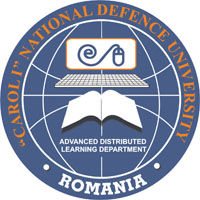UNDERSTANDING OF OPTICS PHENOMENA BY BUILDING MATHEMATICAL AND COMPUTATIONAL MODELS
UNDERSTANDING OF OPTICS PHENOMENA BY BUILDING MATHEMATICAL AND COMPUTATIONAL MODELS
Author(s): Daly Marciuc, Cristina MIRON, Petra CSEREOKASubject(s): Education
Published by: Carol I National Defence University Publishing House
Keywords: Physics education; mathematical modelling; virtual modelling; optics phenomena
Summary/Abstract: Using computational technology to support in-depth understanding of complex physical phenomena represents an opportunity in the current educational practice. Harnessing powerful but affordable technology enables teaching concepts and mathematical models otherwise more difficult to explain. The teacher of Physics has the chance to perform their work of teaching not only as a Science but also as an Art, in their striving to initiate pupils in the alphabet of Science. The objective of teaching activities is not confined to mere scientific literacy, but also to transmit the joy of understanding the world we live in, and to raise the interest for study and research. In this paper, we show how some spectacular optical phenomena can be understood in depth by the students, through recourse to the mathematical language of Physics. In our approach, the computer becomes, together with the teacher, a key mediator in the process of understanding complex mathematical relations by the students. The activities presented in this paper were carried out at the Centre of Excellence of Satu Mare, with students of the interdisciplinary study group who are involved in inquiry based learning, by the creation and the use of computer models in the study of Science. The computer applications that have been used in our activities, namely the educational software Cinderella and GeoGebra, are free and allow an appropriate implementation of various mathematical models. The purpose of our research is to discover new ways of using computational technologies in education, whereby a greater number of students can understand the principles of scientific inquiry, becoming interested and passionate about Science.
Journal: Conference proceedings of »eLearning and Software for Education« (eLSE)
- Issue Year: 11/2015
- Issue No: 03
- Page Range: 503-510
- Page Count: 8

